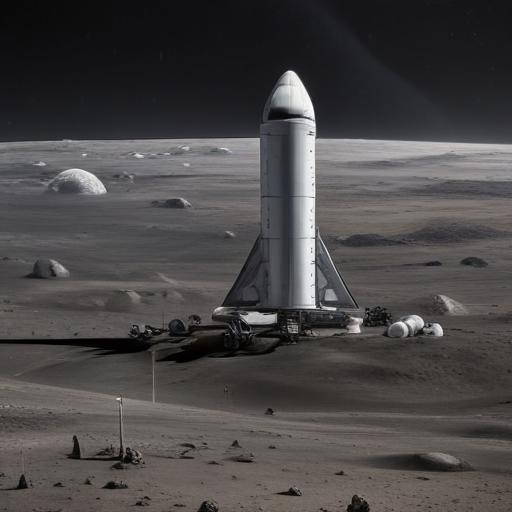SpaceX’s Starship program remains a case study in high-stakes engineering: breakthroughs and spectacular setbacks appear in rapid succession as the company presses ahead with a vehicle it hopes will redefine orbital travel, lunar exploration, and even Mars settlement.
The past year has underscored the tension between ambition and reliability. From its Boca Chica launch site, Starship has seen three test flights this year, two of which ended with explosions before payload deployment and a third that failed to place its test satellites and spun out of control on descent. A separate fueling test saw a nitrogen bottle damaged during the fueling process, triggering an explosion. Each incident has sparked questions about whether the starship’s design changes, implemented to accelerate development, are introducing new risks.
To accelerate Starship development, SpaceX has shifted resources and personnel across its programs. In the wake of a Starship incident, roughly 20% of engineers previously working on the Falcon 9 program were reassigned to Starship for about six months. SpaceX has also leaned on a culture of rapid learning from failures: the company has moved quickly to address issues, sometimes by bringing in additional staff from other ventures, including the Boring Company and, in earlier years, Tesla, to ramp up production or resolve bottlenecks.
Starship is not operating in a vacuum. SpaceX’s broader strategy leans on a diversified income stream, with Starlink satellites and services providing the cash flow that can underpin the heavy upfront costs of Starship. The company is pursuing a fundraising path that has valued it around $400 billion, with investors eyeing even higher targets if Starship can demonstrate sustained progress. Yet during its latest fundraising round, SpaceX discussed a potential $500 billion valuation before backers advised a recalibration, underscoring the delicate balance between hype and proven progress.
Looking ahead, SpaceX has targeted a tenth Starship flight as soon as late August. The outcome of this next test—along with subsequent flights—will shape investor confidence and the company’s ability to meet NASA contracts and commercial commitments. NASA has awarded SpaceX roughly $4 billion to use Starship for lunar missions, a program that requires Starship to perform in-orbit refueling, repeated transfers, and eventual crewed landings. To meet those goals, engineers remain focused on perfecting heat-shield tiles, improving data collection from test flights, and refining the Raptor engine seals as propellant loads increase.
The broader landscape helps explain the pressure on Starship. The White House has floated phasing out the Space Launch System in favor of commercial options, a stance that would elevate Starship as a leading contender for deep-space activities. In Congress, the future of related programs has become a political chessboard, with figures like Senator Ted Cruz advocating for continued funding to ensure continuity for NASA’s lunar ambitions. Against this backdrop, SpaceX’s ability to demonstrate clear, visible progress becomes critical not only for investor confidence but also for public perception of the program’s feasibility.
Industry observers note that Starship’s rapid pace and its significant design changes can produce cascading effects across the vehicle’s many systems. For example, adding more propellant on later flights helped push the Raptor engine seals to their limits, a factor cited by people familiar with internal discussions. Yet many engineers still describe the work ethos at SpaceX as a relentless pursuit of learning: failures are treated as data, and the company believes it can iterate more quickly by failing early and often rather than pursuing perfection before a single test.
Despite the challenges, SpaceX remains a remarkably hardware-rich operation, continually producing and testing multiple Starship prototypes. Engineers argue that continuing to fly even imperfect versions of Starship can yield important insights, especially as the vehicle is intended to serve as the backbone for future crewed missions to the Moon and, ultimately, Mars.
In the near term, Starship must earn public trust through demonstrable, rapid, and measurable progress. If the vehicle can deliver successive successful flights, demonstrate reliable refueling and orbital operations, and meet NASA’s lunar timetable, the program could restore momentum in the eyes of investors, policymakers, and the broader space community.
Summary: SpaceX’s Starship program is navigating a tense phase of high risk and high potential. A string of test failures has pressed the company to rethink design choices, reallocate talent, and push for faster iteration. Yet Starship’s crucial role in NASA’s lunar ambitions and SpaceX’s broader plan—supported by Starlink’s revenue—means continued investment and public demonstrations of progress remain vital for the program’s long-term viability and valuations. The next few launches will be pivotal in determining whether Starship can move from ambitious prototype to reliable workhorse.
Additional comments:
– The article illustrates how SpaceX’s strategy relies on rapid iteration and a willingness to absorb short-term setbacks for long-term gains. That approach has defined SpaceX’s culture and its relationships with NASA, investors, and industry observers.
– The ongoing balance between speed and reliability is likely to shape engineering decisions for Starship, including further refinements to the heat shield and propulsion system, as well as how frequently newer versions are introduced.
– If Starship can deliver consistent, successful flights and scalable refueling in orbit, it could accelerate both lunar and interplanetary goals, while potentially reshaping the competitive landscape of space access and policy priorities.
